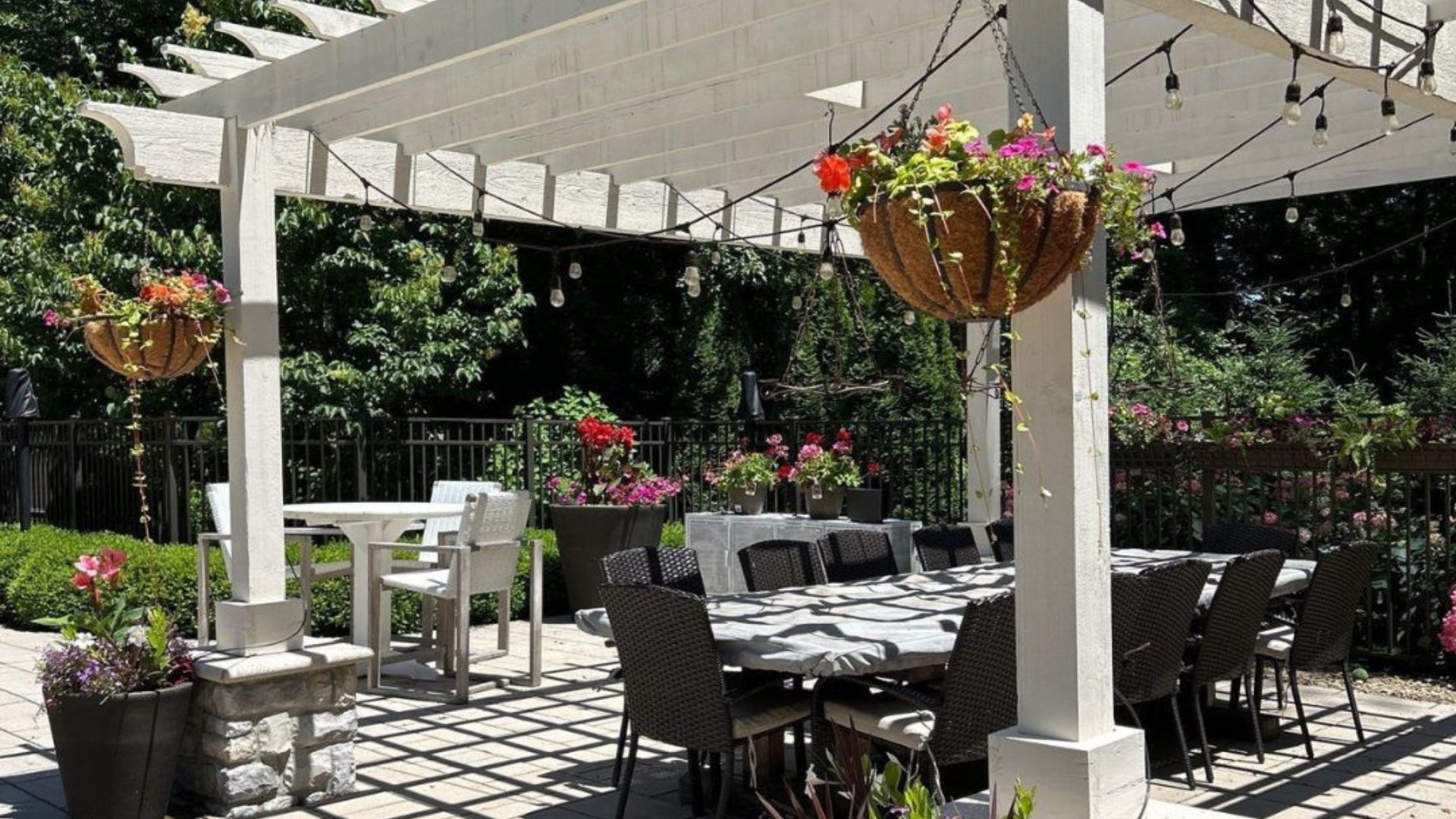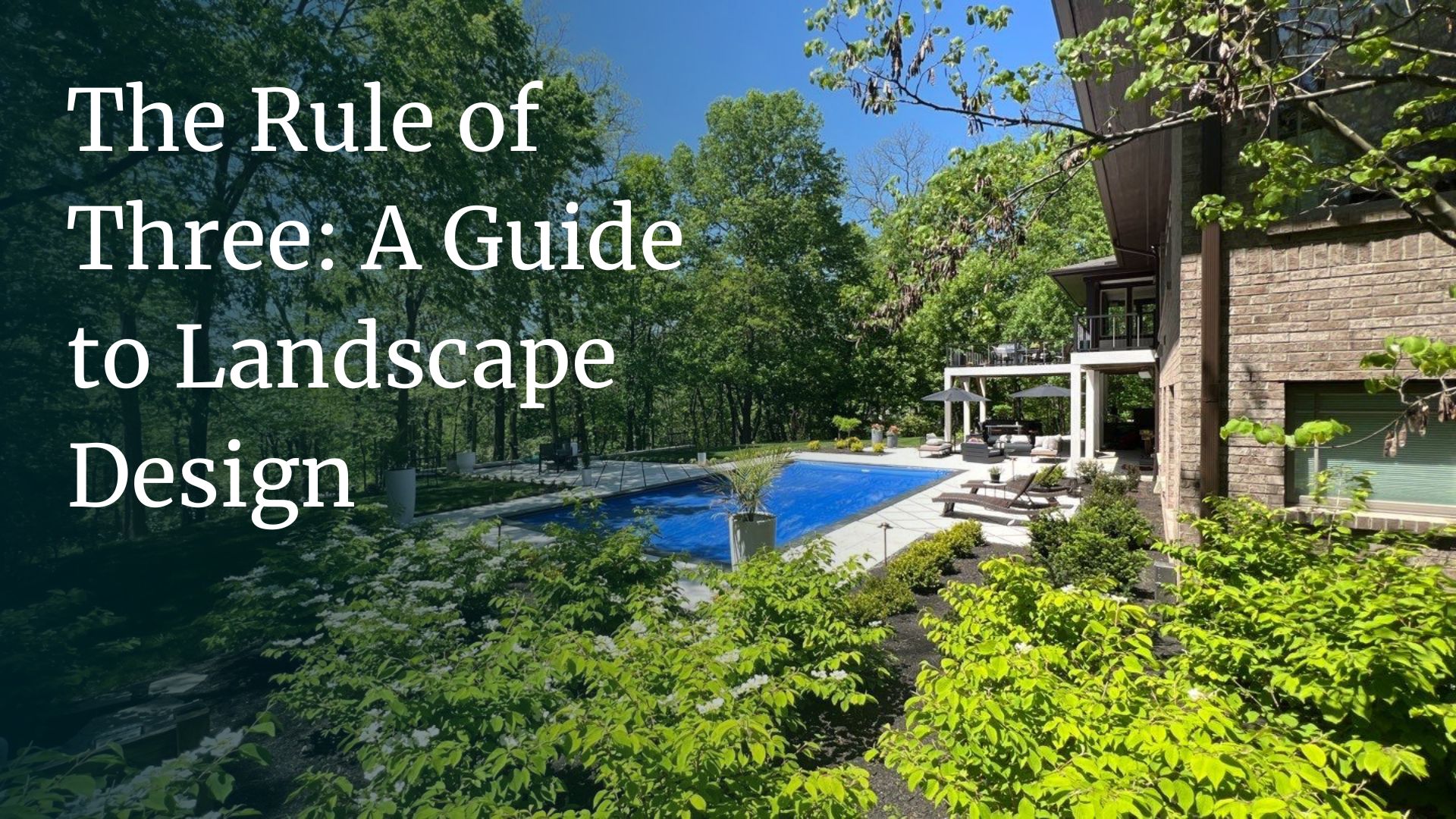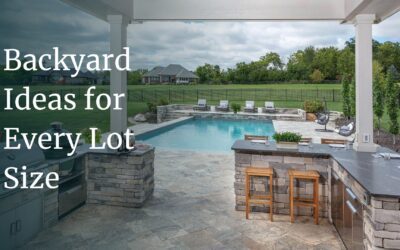Just like with s’mores and BLT sandwiches, good things come in threes. With landscape designs, three is a magic number, too.
The “rule of three” is an age-old principle that serves as a guiding light for both landscape designers and homeowners. While trends and fads come and go, this principle, rooted in aesthetic balance and visual harmony, has stood the test of time.
Celebrating “Three-dom”
The rule of three suggests that elements arranged in threes are inherently more appealing and memorable to the human eye than those arranged in other quantities. Whether it’s plantings, hardscape features or focal points in your yard, employing this principle can elevate the overall design of any outdoor space.
One of the key reasons behind the effectiveness of the rule of three in landscape designs lies in its ability to create a sense of balance and proportion. By grouping elements in threes, designers can achieve symmetry without being overly rigid or predictable. This balance fosters a feeling of harmony and tranquility, drawing viewers into the landscape and inviting them to explore further.
Here, There and Everywhere
In plantings, the rule of three can be applied in numerous ways. For instance, landscape designers may choose to incorporate three different types of plants with varying heights, textures and colors to create a dynamic and visually engaging arrangement. Along the same lines, grouping three identical plants in different areas of the garden can create cohesion and continuity throughout the space.
When it comes to hardscaping, elements such as pathways, seating areas and water features can also benefit from the rule of three. By strategically placing three focal points within a landscape, designers can establish a sense of hierarchy and rhythm, guiding the viewer’s gaze and creating points of interest that serve as anchors for the overall design.
The Bigger Picture in Landscape Designs
You can even see the rule of three extending beyond the physical elements of a landscape to encompass principles of design such as rhythm, repetition and progression. By repeating elements in threes, designers can establish a sense of rhythm that adds coherence and flow.
This repetition can take many forms, from the pattern of pavers in a pathway to the rhythm of plantings along a border.
Furthermore, the rule of three encourages designers to embrace the concept of progression, which pops up when elements gradually increase or decrease in size, scale or intensity. This gradual progression creates a sense of movement and direction within the landscape, guiding the viewer’s experience and fostering a deeper connection with the environment.

In Practice
The rule of three isn’t just theoretical: it also serves a practical purpose in landscape design. By limiting the number of elements within a composition, designers can avoid clutter and maintain a sense of clarity and simplicity. This restraint allows each element to shine on its own merits, ensuring that the overall design remains cohesive and well-balanced.
Once you know about the rule of three, we bet you’ll start noticing eye-catching groupings of three (or six or nine) things everywhere. This timeless principle offers a simple yet powerful framework for creating beautiful and harmonious spaces both indoors and out. Our designers embrace it to elevate the aesthetic appeal of a landscape and foster a deeper connection between people and nature.
What would your dream landscape or outdoor living area look like? We’d love to hear about your vision. Contact us today!




